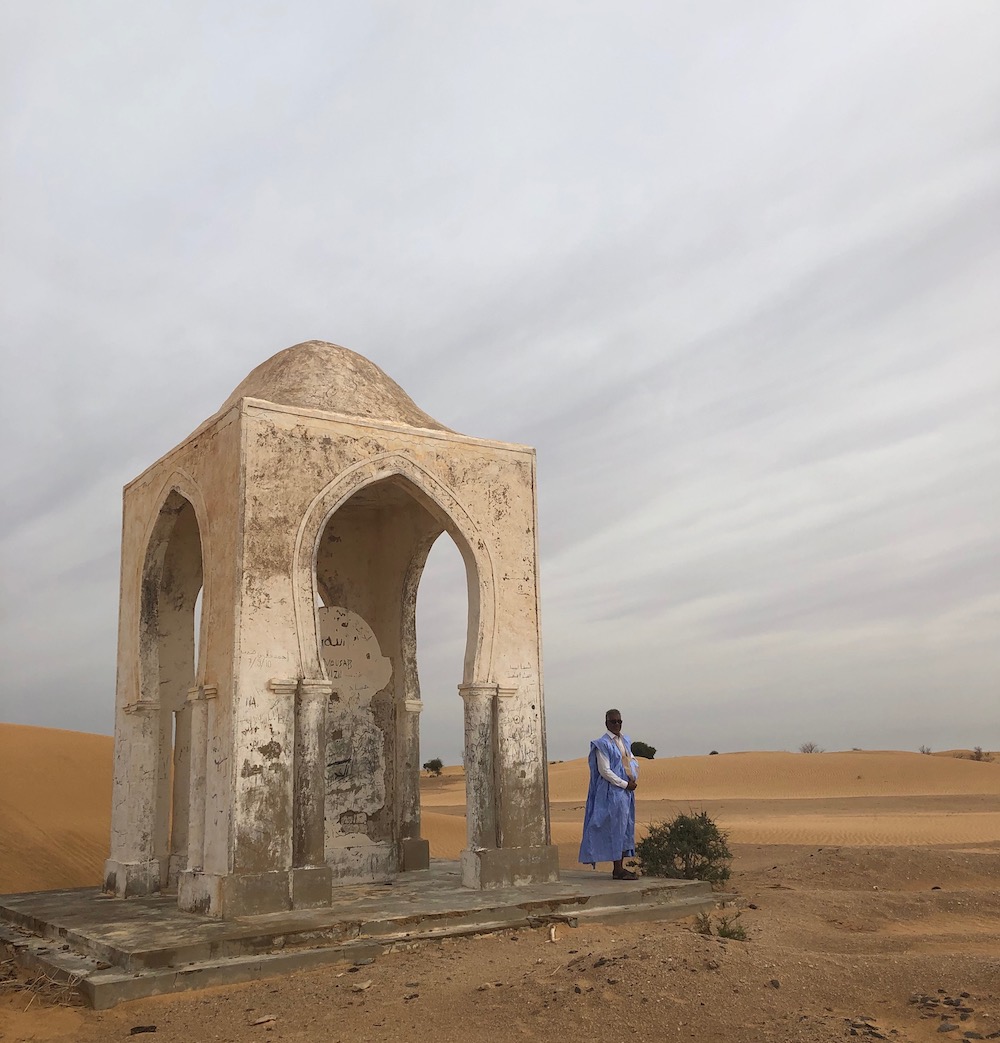Mauritania’s past doesn’t want to go away
The so-called “peaceful transition” in Mauritania, from colonialism to political independence, isn’t unanimously understood as such inside the country, and it reflects older rivalries.

A monument, built in 1932, to commemorate the Battle of Oumtounsy in Mauritania. Image: Francisco Freire.
Contrary to what happened in most postcolonial transitions in Africa, in Mauritania the post-independence government was not initially associated with any liberation movement. It was composed of people who had been in most cases educated in France, and were groomed to govern independent Mauritania by French colonial administrators. It is probably because of this that today, more than 50 years after Mauritania’s independence, we are (finally) faced with a public debate centered on the country’s colonial heritage. This is a debate in which local actors are blatantly labeled as “resisters” or as “collaborators.”
The Zawaya and Hassane labels (tentatively and respectively translated in English as “religious” and “warrior”) are generally (but not exclusively) associated with the different status groups traditionally acknowledged in the western regions of the Sahara. On the “collaborator” side, one could identify the Zawaya from the southwestern region of present-day Mauritania, who accepted the presence—deemed inevitable—of French colonial forces in the northern margins of the Senegal River. By contrast, the “resisters” side tends to be associated with different Hassane political leaderships, which led an effective opposition to colonial forces (notably in the initial decades of the 20th century).
In 1960, the leading figures guiding Mauritania’s transition to independence were affiliated with Zawaya groups from the southwestern Trarza region of Mauritania. Moctar ould Daddah, the first president of the country and a product of southwestern Mauritanian religious scholarship, stayed in power for 18 years. After 1978, a succession of different leaders curbed the pivotal role that the Trarza Zawaya held for many decades. This history culminated in the more recent President, Ould Abdel Aziz (2009-2019), taking a stance to adopt muqawama (colonial resistance) as an official state policy.
Currently, some of Mauritania’s more distinguished political figures, including current President and appointed successor to Abdel Aziz, Ould Ghazwani (in office since August 2019), defend the presentation of the country as a nation marked by the blood of the martyrs who fought against French colonialism. Two red stripes, symbolizing the blood of anti-colonial combatants, were added to the national flag in 2017, and the new Nouakchott International Airport was named after the battle of Um Tunsi (1932), in which a French-led military expedition (which included Mauritanian soldiers) was defeated.
However, these social markers must be used with caution. They provide an overall framing of the decolonial debates as perceived locally, but they must, at the same time, give room to many exceptions which complicate this idealized social design. One particularly poignant example of this has to do with the assassination of the well-known French colonial administrator Xavier Coppolani in 1905. The raid that culminated in Coppolani’s death was led by Sharif Ould Moulay Zein. Zein is someone who currently epitomizes the “resistance narrative” in Mauritania, but was from a Zawaya background.
The continuation of the muqawama debate in Mauritania also confirms the pervasive traditional social order in Mauritania where the Hassane and Zawaya, the two “noble” components of Mauritanian social structure, dispute political privilege between themselves. This social structure is largely made up of the Hassanophone populations (speakers of Hassaniyya) of the western regions of the Sahara, and is used to incorporate various other groups into tributary status, with emphasis on the Haṛatine population or persons of slave descent. Thus, this debate primarily reenacts an ancestral rivalry between the Zawaya and Hassane groups.
Still, the introduction of this historical narrative into contemporary public and media spheres opens the country to a debate around decolonization, which had been muted for a long time but that wasn’t at all concluded.
We made the following video as a visual record of how this dynamic plays out in Mauritania today:


